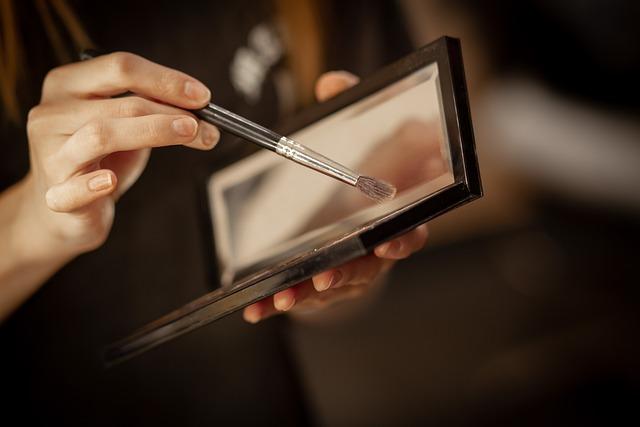In the realm of television, where fantasy and reality intertwine, few series have captivated audiences as profoundly as “Game of Thrones.” Beyond its intricate storytelling and sprawling landscapes, the show is a masterclass in visual transformation, achieved largely through the ingenious use of prosthetics and makeup. This article delves into the pivotal role these elements played in bringing George R.R. Martin’s vivid characters to life, examining the meticulous artistry and technical prowess that underpinned the series’ success. By analyzing key transformations, we uncover how the seamless integration of makeup and prosthetics not only enhanced the narrative but also redefined the boundaries of character embodiment on screen.
Crafting Iconic Characters Through Prosthetic Innovation
The transformation of actors into their otherworldly counterparts in Game of Thrones owes much to the groundbreaking work in prosthetics and makeup. This meticulous art form blends innovation with tradition, allowing characters to transcend the limits of ordinary human appearance. From the chilling visage of the Night King to the intricate scarring of Sandor Clegane, prosthetic innovation has been pivotal in creating the iconic and immersive world of Westeros.
Key elements of this transformative process include:
- Layering Techniques: Artists employ multiple layers of silicone and latex to add depth and realism to character features.
- Color Matching: Precise color application ensures seamless integration with the actor’s natural skin tone.
- Custom Molds: Tailored molds are crafted for each actor, allowing for a perfect fit and enhanced mobility.
These techniques not only enhance the visual storytelling but also enable actors to fully embody their roles, contributing to the show’s legendary status.

Mastering Makeup Techniques for Realistic Transformations
In the fantastical world of Game of Thrones, the transformation of actors into their mythical counterparts relied heavily on the synergy between prosthetics and makeup artistry. These transformations were not just about adding layers; they required a deep understanding of character anatomy and narrative context. Prosthetics played a crucial role, from creating the scaly visage of the Children of the Forest to the intricate details of the White Walkers. Each piece was meticulously crafted, ensuring it moved seamlessly with the actor, enhancing believability.
Makeup techniques were equally pivotal, serving as the bridge between the prosthetics and the actor’s natural features. The use of airbrushing allowed for seamless blending, while contouring helped define and exaggerate features, adding depth and realism. Color theory was employed to ensure that skin tones matched the cold, icy palettes of the North or the warm, sun-kissed hues of the South. These techniques required precision and creativity, allowing the actors to not only look the part but also embody the essence of their characters, making the fantasy world of Westeros strikingly tangible.
 CGI for Seamless Integration”>
CGI for Seamless Integration”>
Balancing Practical Effects and CGI for Seamless Integration
In the epic saga of Game of Thrones, the seamless fusion of practical effects and CGI was pivotal in creating a believable fantasy world. Prosthetics and makeup played an essential role in this integration, offering tangible authenticity to the fantastical elements. By combining these traditional techniques with cutting-edge digital effects, the creators achieved a level of realism that captivated audiences worldwide.
Practical effects provided a tactile presence that CGI alone could not replicate. For instance:
- White Walkers: Intricate prosthetic applications gave these characters a chillingly lifelike presence, enhancing their otherworldly aura.
- Wounds and Scars: Realistic makeup techniques allowed for the depiction of battle scars and injuries, grounding the narrative in a visceral reality.
The strategic use of CGI enhanced these effects, adding dynamic elements like movement and environmental interactions. This careful balance ensured that each character transformation felt both believable and immersive, maintaining the show’s high visual standards.

Expert Recommendations for Aspiring Special Effects Artists
- Study Anatomy and Materials: A deep understanding of human anatomy and the properties of different materials is crucial. This knowledge allows artists to create prosthetics that move naturally and withstand the rigors of filming.
- Master Traditional Techniques: While digital effects are prominent, traditional skills like sculpting, molding, and casting remain essential. These techniques provide the foundation for creating lifelike prosthetics.
- Embrace Collaboration: Successful transformations require close collaboration with directors, actors, and costume designers. Understanding their vision ensures that the prosthetics and makeup enhance the storytelling.
- Invest in Quality Tools: High-quality brushes, airbrush systems, and sculpting tools can significantly impact the final product. Investing in these tools can elevate the level of detail and realism in your work.
- Stay Updated with Trends: The industry evolves rapidly. Attending workshops and following industry leaders can provide insights into new techniques and materials, keeping your skills sharp and relevant.

